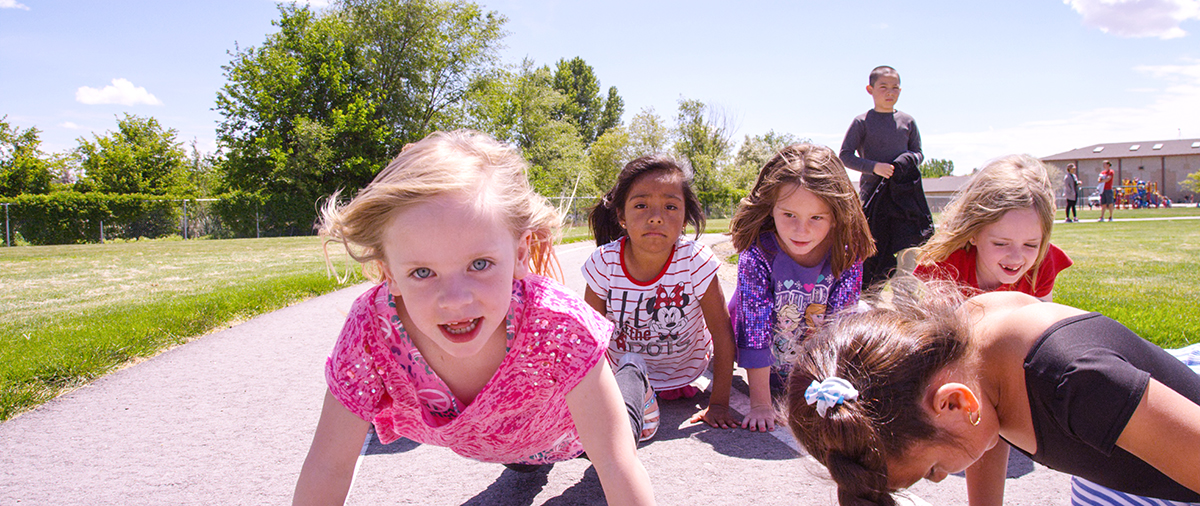
Executive Director
Anyone who has children, or even watched children, knows that at a young age the “why” questions begin. Consider a “why dialogue” I had recently with my five-year-old son, Finn:
Finn: “Why do we have winter?”
Me: “Because the earth revolves around the sun (reaching for a couple nearby drinking cups to demonstrate)… and during the winter we are farther away from the sun.”
Finn: “Why does the earth move around the sun?”
Me: “Well that is complicated, but basically the sun’s gravity pulls on the earth to make it turn.”
Finn: “Why?”
Almost every parent has been there — the “why” questions keep coming until the young child is satisfied with the answer. It can be frustrating, but there’s a lot we as funders and community leaders can learn from this.
Put simply: funders and community organizations need to spend more timing asking “why?”
Only by asking “why” can we determine if the challenge or issue we are trying to address is simple, complicated or complex, a piece of information we must have in order to determine an effective course of action. This is especially true when trying to address many of today’s pressing issues, including hunger, homelessness, poverty, and obesity.
The late, great Brenda Zimmerman, a thought leader in community change and collective impact, highlighted the difference between simple, complicated and complex this way:
| Simple | Complicated | Complex |
|---|---|---|
| Following a recipe | Sending a rocket into space | Raising a child |
| Recipe is essential | Detailed protocols are critical and necessary | Prescriptive protocols have limited relevance |
| Recipes are tested to assure replication | Sending one rocket to the moon increases likelihood of next being a success but isn’t guaranteed | Raising one child provides expertise but is no guarantee of success with the next child |
| No particular expertise is needed but cooking expertise increases likelihood of success | High degree to achieve a certain outcome if everything comes together in the right way, but also many places where it can go wrong | Every child is unique and must be understood as an individual |
| Best recipes give good results every time | Success depends on a blueprint that directs development and relationships to assemble | Outcomes vary by child and remain uncertain over time |
 Simple situations are like following a recipe to bake a cake — the recipe is essential; the recipe has been tested to assure replication; no particular expertise is needed, but cooking expertise increases the likelihood of success; and best recipes give good results every time.
Simple situations are like following a recipe to bake a cake — the recipe is essential; the recipe has been tested to assure replication; no particular expertise is needed, but cooking expertise increases the likelihood of success; and best recipes give good results every time.
Complicated situations are like sending a rocket to the moon — a detailed protocol is necessary; sending one rocket to the moon increases the likelihood of the next being a success, but is not guaranteed; and success depends on a blueprint that directs development.
Complex situations are like raising a child (parents with multiple children will really get this notion) — prescriptive protocols have little relevance; raising one child provides expertise but is no guarantee of success with the next child; every child is unique and must be understood; outcomes vary by child and remain uncertain over time.
Many of today’s pressing issues are actually complex, but we treat them as complicated or simple. It’s human nature. We humans have a tough time looking at all the details of an issue at once. And even when we do, understanding the complexity of an issue can be overwhelming or daunting. As a result, we make complex issues simple, which leads to minimal long term impact because we have never embraced the issue’s root cause. We end up working to solve symptoms and never fully comprehend, let alone address, what is actually creating the symptoms.
 Solving Symptoms Isn’t Enough
Solving Symptoms Isn’t Enough
In Peter Block’s book Community: The Structure of Belonging he writes, “trying to solve symptoms only sustains them.” I call this the “carousel effect.” When we focus on the symptoms, we put people on a carousel of sorts. They keep going around and around and around on the carousel, unable to change their path because the root cause never gets addressed. Obviously, funders and community organizations have the best of intentions. But unfortunately, many — because of inertia or habit — continue to put people on the carousel.
Addressing only symptoms is like putting a Band-Aid on a bullet hole. Programs may be able to cover up or slow the bleeding, but the underlying issue — and it’s associated symptoms — persist. If the Band-Aid is ripped off by a cut in funding or staff, the lack of healing the Band-Aid supplied becomes obvious.
This isn’t to say we shouldn’t address the symptom. Triaging what needs to be done immediately is important, but not the entire solution. We also need to ask “why?” to try to uncover the root cause of the symptom. Otherwise, we are not going to actually solve the issue. In other words, Band-Aids help, but to be truly successful we have to stop the bullet from creating a bullet hole.
In the health arena, symptoms are very easy to see — obesity, high blood pressure, diabetes… the list goes on and on. However, these chronic diseases are actually outcomes, each comprised of many variables. The Blue Cross of Idaho Foundation for Health frequently takes on the “why?” challenge, closely examining what drives such health outcomes and what we can do to improve or even reverse them. Our aim is to not put people on the carousel.
Single Loop vs. Double Loop
Consider Michael Quinn Patton’s single loop vs. double loop theory. In his book Developmental Evaluation: Applying Complexity Concepts to Enhance Innovation and Use, Michael Quinn Patton overlays his concept of single loop vs. double loop thinking to several familiar analogies:
The cliff analogy – keeping streams of ambulances at the bottom of the cliff picking up people who have fallen off the cliff, or putting up a fence at the top of the cliff to stop them from falling off.
The stream analogy – babies floating down the river and we continue to build services to fish them out instead of going upstream and figuring out what is causing the babies to fall into the stream in the first place.
The fishing analogy – teaching someone to fish versus giving them a fish.
These analogies are reminders of our tendency to go for short-term quick fixes rather than addressing the root cause.
Single loop thinking is a problem in the detection and correction process. In other words, we make changes to improve the immediate outcomes. Quinn Patton gives the example that single loop thinking is a lot like a thermostat that knows when it is too hot or too cold, and turns the heat off or on. The thermostat receives the information and makes immediate corrective action.
Double loop thinking goes beyond this. Double loop thinking asks “why?” This approach involves questioning the assumptions, policies, practices, and system dynamics that led to the problem or symptom. It dives deep. Double loop thinking leads to changes in the system either to prevent the problem/symptom or to embed the solution in the system.
Single loop thinking is frequently not sustainable — it just puts people on the carousel. If we want to create sustainable change, we have to embrace double loop thinking. We need to uncover the “why?” We must stop making the complex simple and instead embrace the complexity while having the persistence to address the “why?”
This will not — cannot — happen overnight. It’s a long-term philosophy and investment. But if we have the strength and tenacity to address the root cause, the change will be large and lasting.
We can do this. We must do this. Let’s challenge each other to start asking the why?
